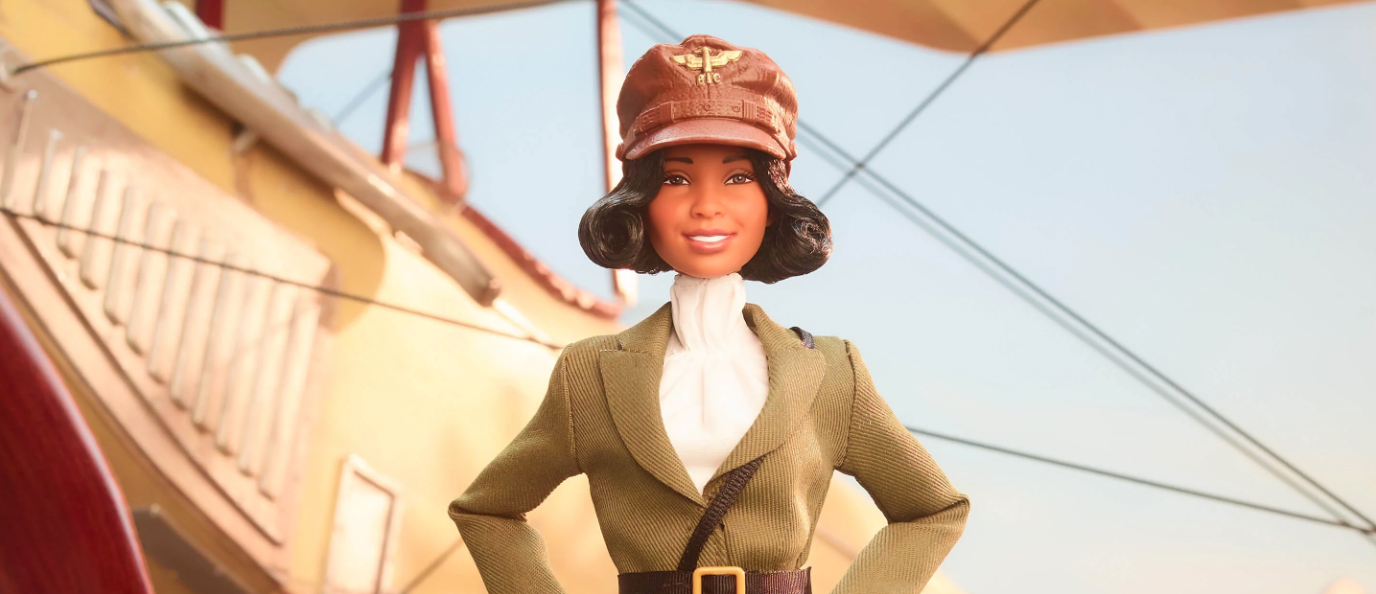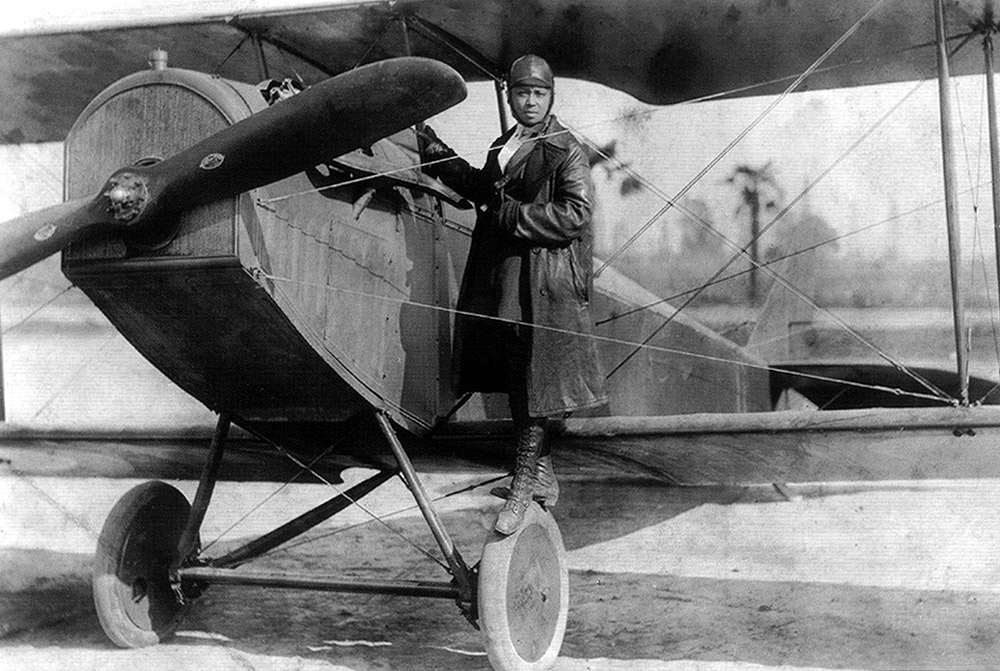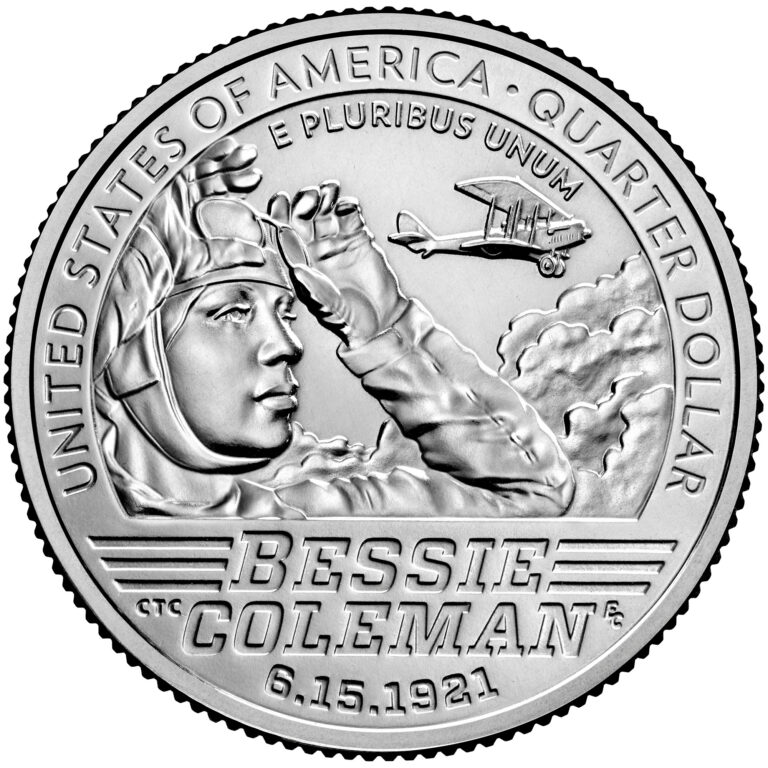Pioneering aviatrix and Atlanta, Texas, native Bessie Coleman's likeness now graces two fellow icons of Americana -- Barbie and the quarter dollar.
The doll, part of Barbie's Inspiring Women series, and the coin, the latest in the U.S. Mint's American Women Quarters Program, were released last month.
In 1921, Coleman became the first person of color to hold an international pilot's license. Over the next five years, she would wow crowds across America as a barnstorming stunt flier, performing daredevil maneuvers and defying gravity -- as well as widespread discrimination.
Coleman, who was turned away from American flight schools because of her gender and the color of her skin, earned her license in France from the Fédération Aéronautique Internationale -- nearly two years before Amelia Earhart.
The groundbreaking pilot refused to participate in events that prohibited Blacks from attending.
"The air is the only place free from prejudices. I knew we had no aviators, neither men nor women, and I knew the race needed to be represented along this most important line so I thought it my duty to risk my life to learn aviation," Coleman said at the time.
BARBIE
The Bessie Coleman Inspiring Women Doll was released on her birthday, Jan. 26.
"Bessie is a remarkable icon to inspire children everywhere to soar to greater heights," said Lisa McKnight, executive vice president and global head of Barbie & Dolls at Mattel, during an interview with ABC News.
In a statement released by CNN, Coleman's great-niece Gigi Coleman said, "As someone who has dedicated much of my life to encouraging youth of all backgrounds to explore careers in aviation, my family and I commend Barbie for expanding my great-aunt's legacy in such an overwhelming tribute."
"We hope through this doll more people will discover Bessie's story and be inspired. Stories have power. I grew up on anecdotes of my great-aunt's courage," said Gigi, president of The Bessie Coleman Aviation All-Stars.
The doll features a "traditional olive-green aviator suit, tall lace-up boots and a cap emblazoned with her initials, ready to soar off into the blue," according to the Mattel website.
U.S. MINT
The American Women Quarters Program is a four-year endeavor celebrating the contributions of American women. Coleman's quarter is the sixth in the series.
"Coleman used her growing fame to tour the country, giving flight lessons, performing in shows and encouraging African Americans and women to learn how to fly. Her flying career, although brief, inspires many young African Americans to pursue the field of aviation," the U.S. Mint website states.
"Keeping Bessie's legacy alive has always been a labor of love for my family, and we are proud to recognize her determination and accomplishments for Black women in aviation and continue to share my great-aunt's pioneering spirit with fans of all ages," Gigi Coleman said in a statement.
The reverse (tails) side of the coin depicts Coleman as she suits up in preparation for flight. "Her expression is reflective of her determination to take to the skies, the only place she experienced a freedom she did not have on the ground," the website states.
The tribute, created by sculptor Eric David Custer and designer Chris Costello, features the usual inscriptions of UNITED STATES OF AMERICA, QUARTER DOLLAR, E PLURIBUS UNUM as well as BESSIE COLEMAN and 6.15.1921 -- the date Coleman received her pilot's license.
The obverse (heads) side displays a portrait of George Washington, originally sculpted by Laura Gardin Fraser to mark Washington's 200th birthday, as well as the standard inscriptions LIBERTY, IN GOD WE TRUST and 2023.
The U.S. Mint is expected to release four other coins in the series this year: Edith Kanakaʻole – indigenous Hawaiian composer, custodian of native culture and traditions; Eleanor Roosevelt – first lady, author and civil liberties advocate; Jovita Idar – Mexican-American journalist, activist, teacher and suffragist; and Maria Tallchief – America's first prima ballerina.
Former Stamps, Arkansas, resident Maya Angelou -- celebrated writer, performer and social activist -- was the first woman in the series, which started in 2022 and will run through 2025. Stamps is an hour northeast of Atlanta.
EARLY LIFE
Though Elizabeth "Bessie" Coleman made a life for herself soaring free above the clouds, it was a world away from where she started.
Coleman was born on Jan. 26, 1892, in Atlanta, Texas, to sharecroppers George and Susan Coleman. She was the 10th of 13 children. When she was 2, her family moved to Waxahachie, Texas. It was there, in a one-room, segregated school, that Coleman would first make a name for herself as a gifted student. She walked 4 miles each day to get to class.
When she was 9, her father, who was of African American and Native American descent, moved to what would become Okaloma in search of better opportunities. Coleman and the rest of her family remained in Texas. A few years later, she earned a scholarship to the Missionary Baptist Church School.
HOW IT STARTED
At the age of 23, she followed her brothers to Chicago and worked as a manicurist at the White Sox Barber Shop. Here, just a year into World War I, her interest in flying was sparked. She was enthralled by stories from combat pilots returning home from the war and soon took a second job to save money in hopes of becoming a pilot.
"Everyone thought she was crazy. She was A: black; B: a woman. When she realized she needed help, she went to Robert Abbott -- the owner of the Chicago Defender and pleaded her case to him about why it was important for there to be a Black woman flying," said Madeline McCray, author of "Bessie Coleman: Dream to Fly."
Abbott, who wrote about her quest in his newspaper, encouraged her to study abroad. Coleman took one year of French lessons before leaving for France, thanks to a sponsorship from the newspaper and banker Jesse Binga.
"She didn't face the same obstacles in France. All they cared about was whether or not you had the courage and willingness to learn how to fly," McCray said in an interview with PBS' "American Experience."
ABOVE THE CLOUDS
On June 15, 1921, Coleman earned her international pilot's license. After further training in the Netherlands and Germany, she launched her high-flying career, wowing crowds of Blacks and whites across the United States.
Thanks to her incredible skills and stunts, "Brave Bessie" became a highly popular draw for the next five years. Coleman used the opportunity to speak to crowds, promoting aviation and combating racism.
CUT SHORT
Coleman dreamed of opening a flight school for Black aviators, but she would not live to see it happen.
On April 30, 1926, Coleman and her mechanic took to the skies in Jacksonville, Florida. Ten minutes into the flight, however, the plane went into a dive and then a spin.
Thirty-four-year-old Coleman, a passenger, was thrown out at 2,000 feet and died on impact. The pilot, William D. Wills, could not regain control of the plane and died in the crash. It was later discovered a wrench had jammed the plane's controls.
LEGACY
Though Coleman didn't get to open the school she dreamed of, her story has inspired generations of pilots from all walks of life -- including Col. Merryl Tengesdal, the first and only Black female to fly the U-2 aircraft, perhaps the most famous spy plane ever built.
"To be a pilot, you have to be adventurous. There's a fearless factor to it," Tengesdal said during an interview with "American Experience."
"Bessie Coleman was able to up the bar in terms of who could fly despite gender and racial barriers of the time."




